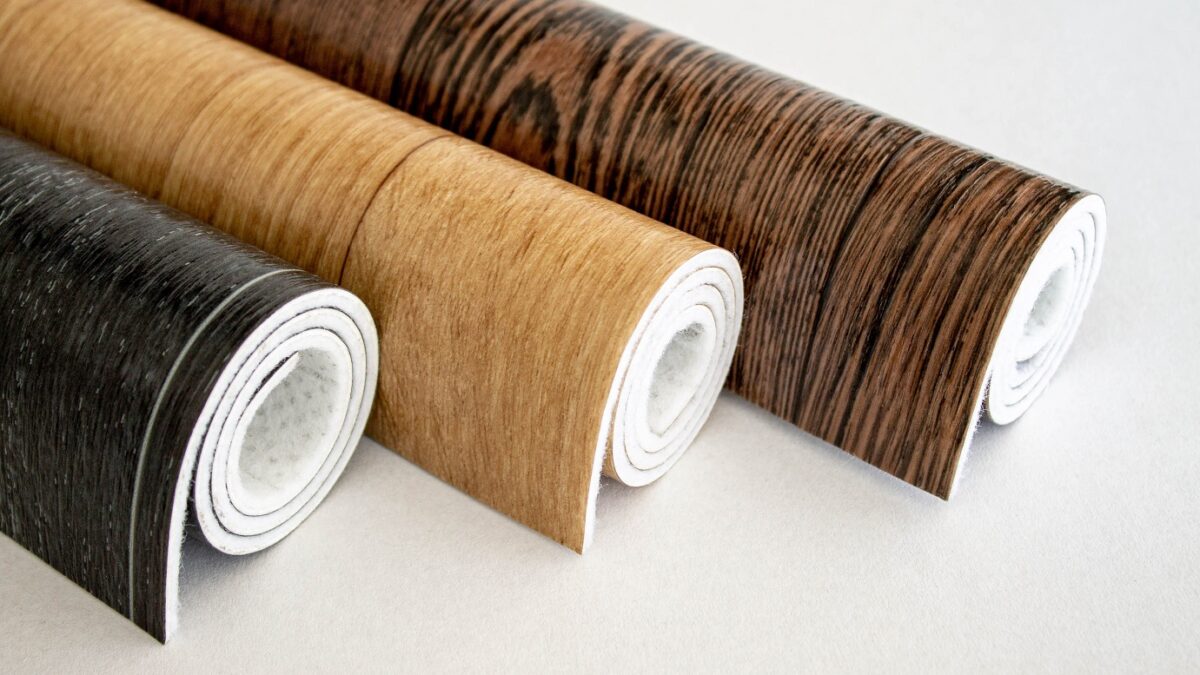Vinyl flooring vs Linoleum: Key Differences
Linoleum Flooring
Linoleum flooring is made of natural materials, such as linseed oil, which is where the name “linoleum” comes from. Its makeup also includes wood flour, pine resin, cork, and mineral fillers. Linoleum’s renewable components make it an environmentally-friendly flooring option and a great choice for green design projects. Linoleum flooring consists of a single, solid layer that is water resistant. With proper sealing, linoleum floors can be expected to last up to 40 years — more than double the lifespan of vinyl flooring.
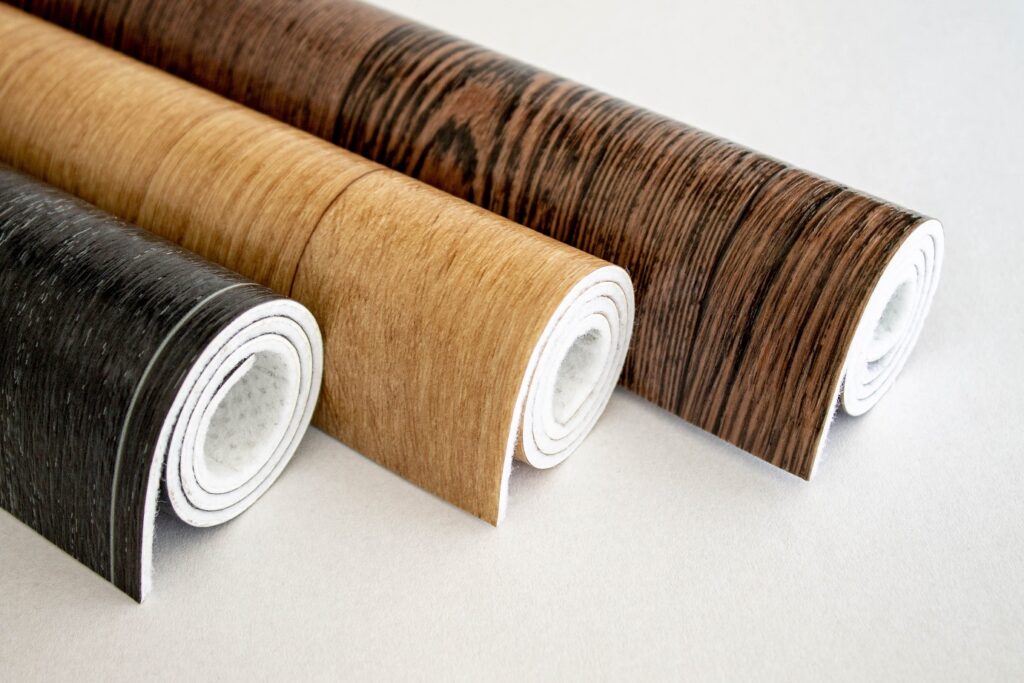
Vinyl Flooring
Vinyl flooring is created from synthetic materials, including resins, plastic and fiberglass. Its artificial materials make it highly durable and more waterproof than linoleum. As such, it’s an excellent option for high-traffic and splash-prone areas like kitchens, bathrooms, and mudrooms. Vinyl is DIY-friendly because it’s easy to install and requires little maintenance over its lifespan, which averages 20 years. Vinyl is a favorite among designers due to its color and patterning options, which make it versatile for any space.
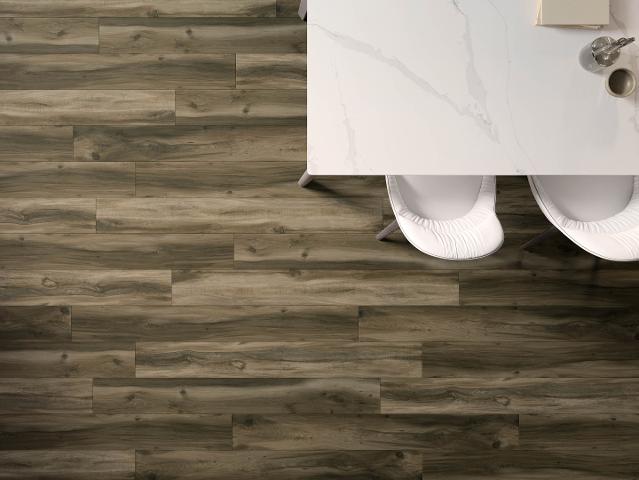
Water, Heat Resistance
Linoleum Flooring
Linoleum does have a basic level of water resistance, making it less susceptible to water damage than hardwood flooring. That said, linoleum does need to be sealed correctly at least once per year to protect against water. If exposed to standing water, linoleum floors can curl at the corners, edges, or seams of the tiles. For this reason, it’s not an ideal flooring choice for areas that may have regular water, moisture, or humidity, like a bathroom or laundry room. However, linoleum is more heat resistant than vinyl. It tends to withstand intense heat without melting immediately and does not readily burn or emit toxic fumes due to its natural material makeup.
Vinyl Flooring
Vinyl flooring has superior waterproof properties compared to linoleum. It can be installed in moisture-prone areas like bathrooms, kitchens, and basements without needing to worry about water damage. On the other hand, vinyl is more susceptible to heat damage and will release toxins when burned.
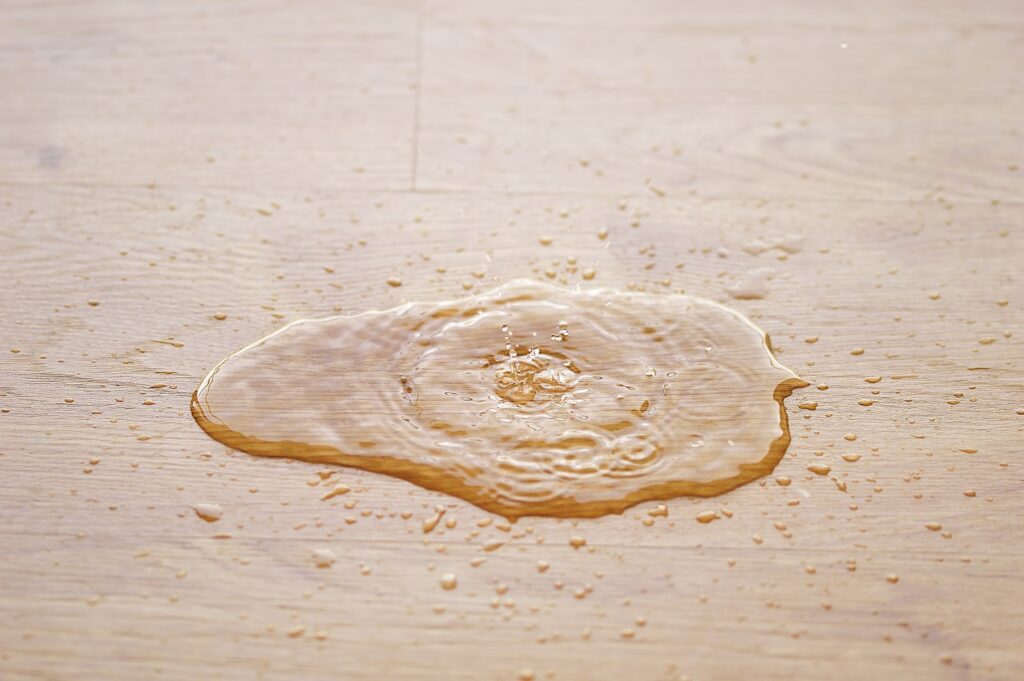
Maintenance & Care
Linoleum Flooring
Linoleum floors must be sealed at least once a year to maintain their water resistance and color pattern. Without proper sealing, linoleum floors can darken or take on a yellow tinge, especially when exposed regularly to sunlight — this process is called “ambering.” If your flooring was not factory-coated for ambering, you may also need to clean and wax it every two or three years to prevent scratches, discoloration, and other damage. Linoleum floors can be cleaned with vacuuming, damp mopping, and mild, non-ammonia-based cleansers.
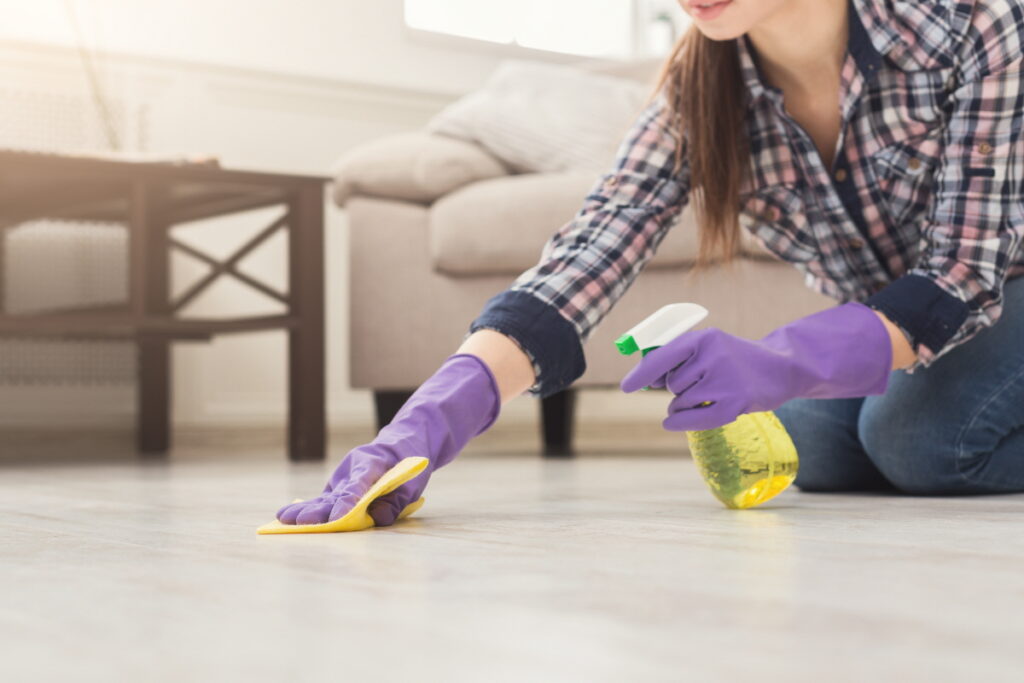
Vinyl Flooring
Vinyl flooring is one of the easiest floors to clean and maintain, as it is engineered to be resistant to mold, mildew and moisture. It can be vacuumed and mopped, and you can use any type of detergent without fear of damaging the material. Wiping down your vinyl flooring on a regular basis will keep it looking clean and new.
Appearance & Comfort
Linoleum Flooring
When linoleum flooring is manufactured, the color is printed all the way through the material in each tile. This makes the design of the flooring more resistant to fading over time. However, linoleum flooring has fewer color, pattern, and design options than vinyl. Because it’s less aesthetically versatile than vinyl, some designers consider the material outdated. Linoleum is a slightly softer material than vinyl due to its use of cork and other natural materials, so it may feel less hard underfoot.
Vinyl Flooring
On the other hand, vinyl is endlessly customizable. It can be manufactured to authentically replicate the look of wood or stone flooring in different natural stains. Vinyl can also be created in thousands of colors and patterns to match the needs of any design project. When it comes to comfort, vinyl flooring tends to be a colder, harder material underfoot, especially when installed over a concrete subfloor.
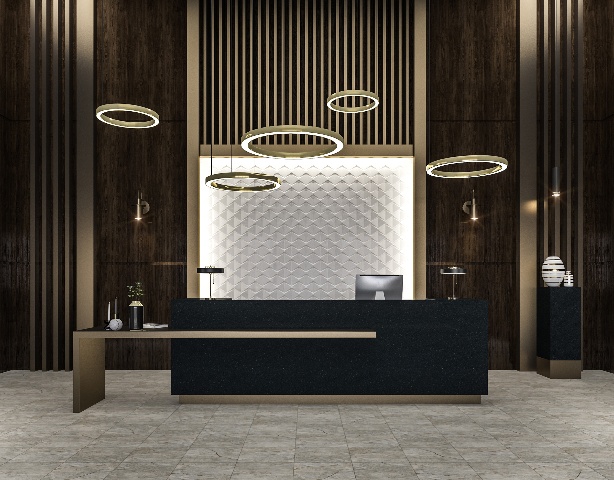
Installation
Linoleum Flooring
Linoleum is typically harder to install than vinyl, so linoleum floors are typically put in place by professionals. Linoleum sheets are tougher to cut than vinyl sheets and require a specialized tool. In some cases, linoleum sheets are applied to the floor with a glue-down bond and then the seams are welded together to create a smooth finish. Linoleum can also be installed with a “click-lock” method, where tiles are joined together without any glue.
Vinyl Flooring
Vinyl tiles are easy to install, making them a favorite flooring option for DIYers. Many tiles are now manufactured with a peel-and-stick adhesive, making them easy and fast to insert into the correct position. You can also install some vinyl tiles with glue. Alternatively, vinyl sheet flooring can be more challenging to install because the sheets must be cut and joined precisely to fit together. Many homeowners opt for professional installation for vinyl sheet flooring, which still tends to be cost-effective when compared with other flooring options.
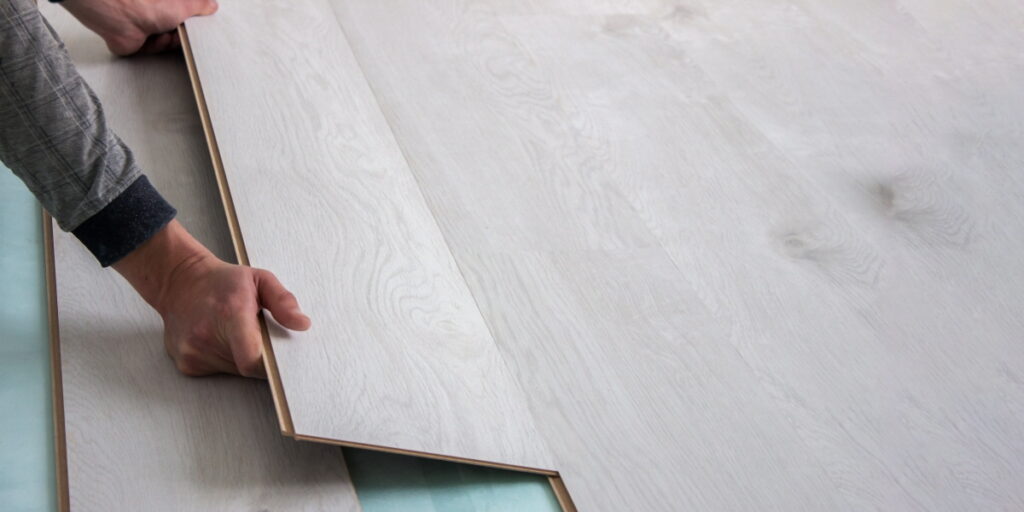
Cost & Resale Value
Linoleum Flooring
Linoleum flooring is known for being a cost-effective material, especially when compared with hardwood or ceramic. It costs, on average, $2 to $5 per square foot if purchased in sheets. It can cost from $3.50 to $5 if purchased in tiles. The cost difference of linoleum compared to vinyl is offset by its longer life expectancy. While linoleum flooring isn’t typically seen as a way to increase the value of a home, it may be a positive attribute for homebuyers who prefer environmentally-friendly materials.
Vinyl Flooring
Vinyl flooring is typically lower in cost than linoleum. It costs on average $.50 to $5 per square foot, if purchased in sheets, and up to $5 per square foot for luxury vinyl plank. Vinyl flooring is typically recognized as an economy flooring option and does not add resale value to a home.
Durability & Lifespan
Linoleum Flooring
When properly sealed and maintained with care, linoleum flooring has a long lifespan averaging 40 years. Its long-term durability makes it an excellent option for homeowners who want a flooring that will stay with them for decades without having to worry about regular replacements. As linoleum is made from all-natural materials, it can be recycled or incinerated safely when no longer in use.
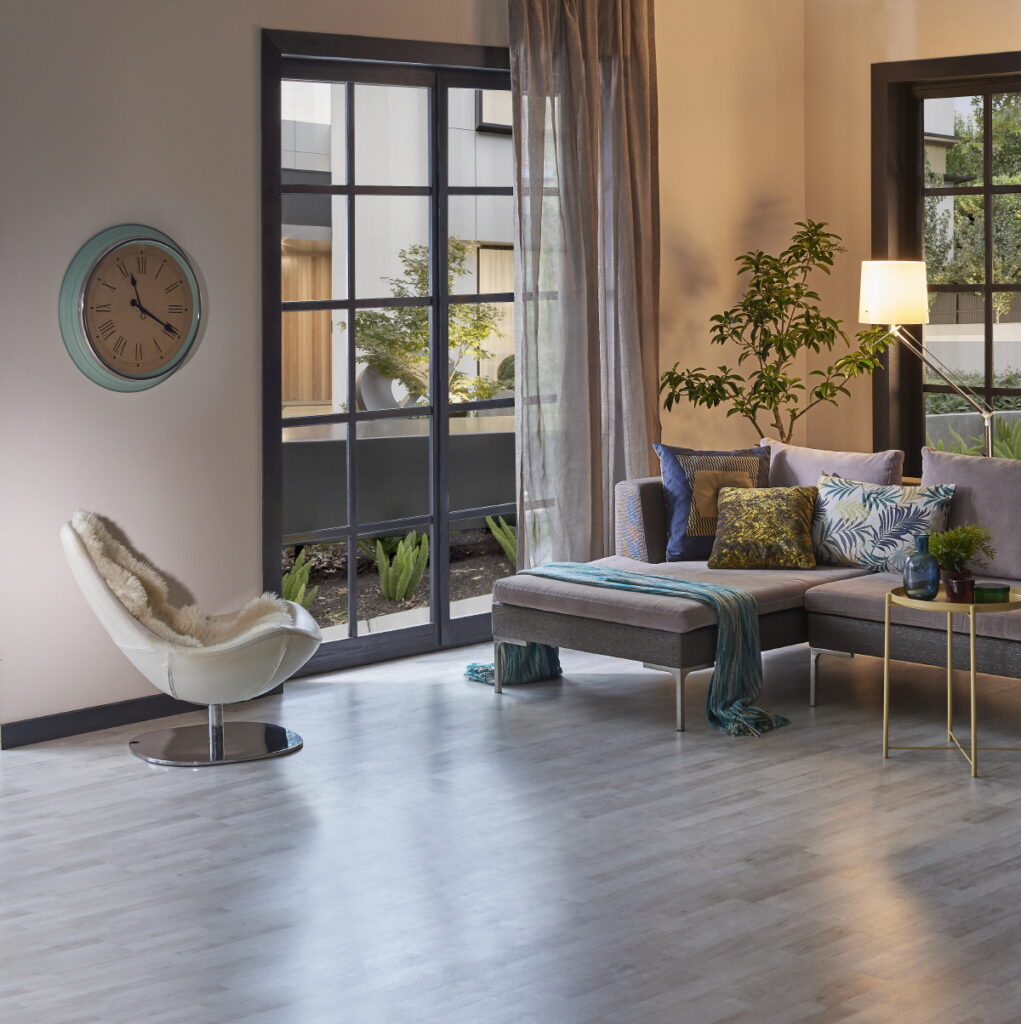
Vinyl Flooring
Vinyl flooring has an average lifespan of 20 years, so homeowners should plan for needing multiple flooring replacements as part of long-term homeownership. In addition, disposing of an old vinyl floor can be challenging. Because vinyl is made from plastics, resins, and other toxic chemicals, it cannot be recycled or burned, meaning it will remain in landfills for centuries.
Top Brands
There are a variety of brands that manufacture linoleum and vinyl flooring with different price points, design aesthetics, and shipping and distribution options. We’ve compiled a list of some of the popular manufacturers to help you find the right flooring option for your project.
Linoleum Flooring
- Forbo (Marmoleon)
- Armstrong (Linoart)
- Tarkett (Johnsonite)
Vinyl Flooring
- Armstrong
- Shaw
- COREtec
- Mohawk
Contact Us
If you’re looking for expert instruction on your kitchen flooring project, contact the team at LX Hausys. Our experts can provide in-depth guidance on linoleum and vinyl flooring options, including maintenance, installation, and design considerations for your space. Reach out today to get in touch.

